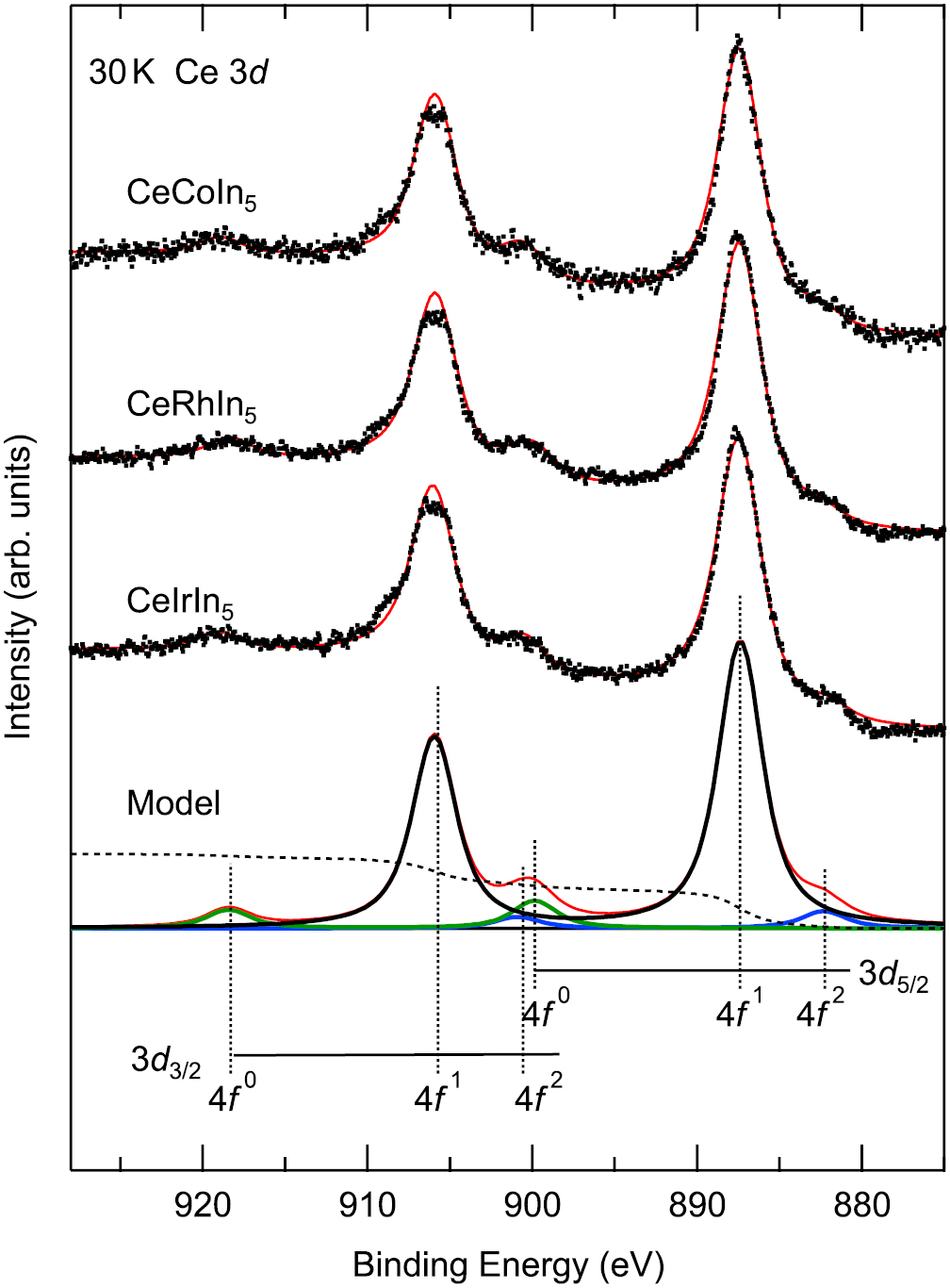We investigated CeTIn5 (T = Co, Rh, Ir) using temperature- and angle-dependent x-ray photoemission spectroscopy. The Ce 3d core level has a very similar shape for all three materials and is indicative of weak f-hybridization. The spectra were analyzed using a simplified version of the Anderson impurity model, which yields a Ce 4f occupancy that is larger than 0.9. The temperature dependence shows a continuous, irreversible and exclusive broadening of the Ce 3d peaks, due to oxidation of Ce at the surface.

We investigated CeTIn5 (T = Co, Rh, Ir) using temperature- and angle-dependent x-ray photoemission spectroscopy. The Ce 3d core level has a very similar shape for all three materials and is indicative of weak f-hybridization. The spectra were analyzed using a simplified version of the Anderson impurity model, which yields a Ce 4f occupancy that is larger than 0.9. The temperature dependence shows a continuous, irreversible and exclusive broadening of the Ce 3d peaks, due to oxidation of Ce at the surface.
